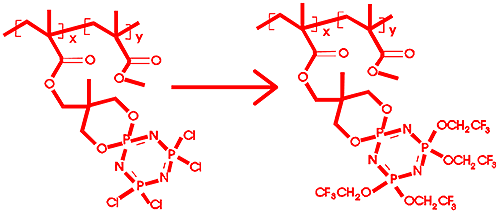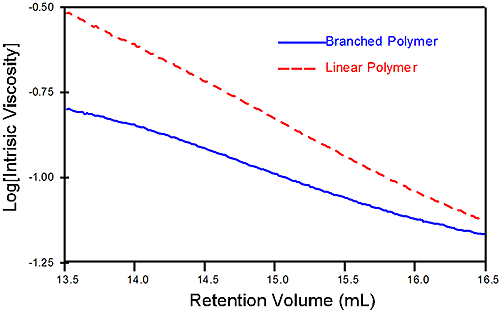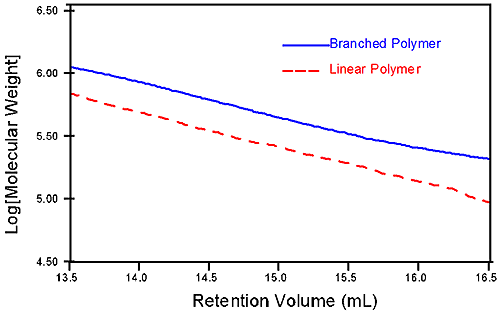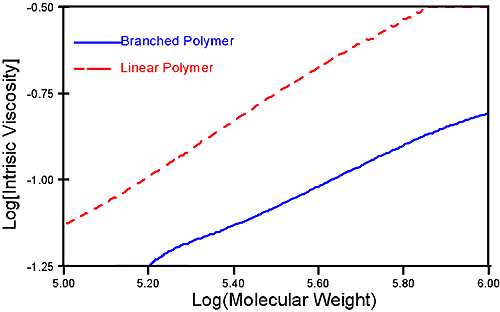The triple detector size exclusion chromatography system is ideal for polymer structure analysis because it directly detects changes in polymer structure as well as molecular weight, whereas conventional methods detect only differences in size
Please login or register to read more
The triple detector size exclusion chromatography (TD-SEC) system is ideal for polymer structure analysis because it directly detects changes in polymer structure as well as molecular weight, whereas conventional methods detect only differences in hydrodynamic size.
The addition of groupings along a molecule's backbone can lead to both a heavier repeat unit and chain transfer within or between molecules. The following system shows an inherent amount of branching growth as well as a degree of heaviness along the backbone. The drawings illustrate a methyl methacrylate-based copolymer structure. The polymer was modified to allow both a heavier backbone and sites available for branching. This polymer was diluted in THF at a concentration of 9.7 mg/ml. Injections of 100 µL of sample were made on two 30 cm columns with ID of 0.8 cm and packed with mixed bed linear material of 10 µm. The Viscotek triple detector system was used to collect and calculate the results.

|

|
Separate plots of the triple detector data are shown to illustrate the effectiveness of the triple detector system.
Figure1 shows the polymer intrinsic viscosity versus elution volume. The viscosity is much lower for the branched polymer than the linear reference polymer. The inverse relationship between intrinsic viscosity and molecular density is well demonstrated.

|
Figure 2 shows that the molecular weight of the branched polymer is greater than that for the linear polymer throughout the range of elution volume. Examining the Mark-Houwink plot, shown in figure 3, for this polymer system, it can be seen that the branched analog has both a lower slope and intercept than that of the linear polymer. The lower slope confirms the presence of branching, and the lower intercept confirms the presence of backbone modification.

|
Combining light scattering to obtain the absolute molecular weight and the viscometer to measure the intrinsic viscosity allows plotting the Mark-Houwink curve clearly showing branching and backbone modification. Triple detection SEC is a very sensitive method to study polymer modification.